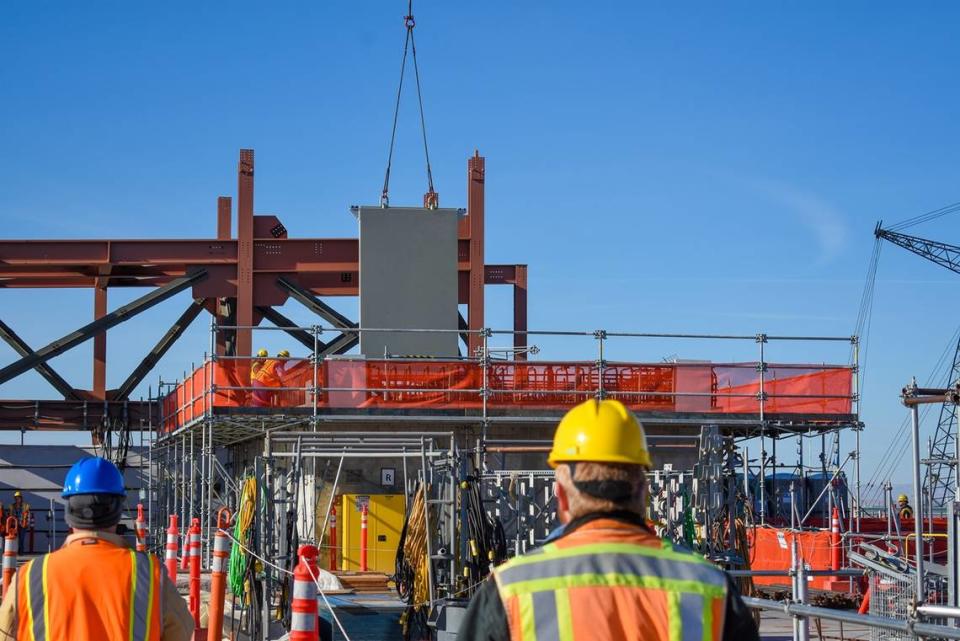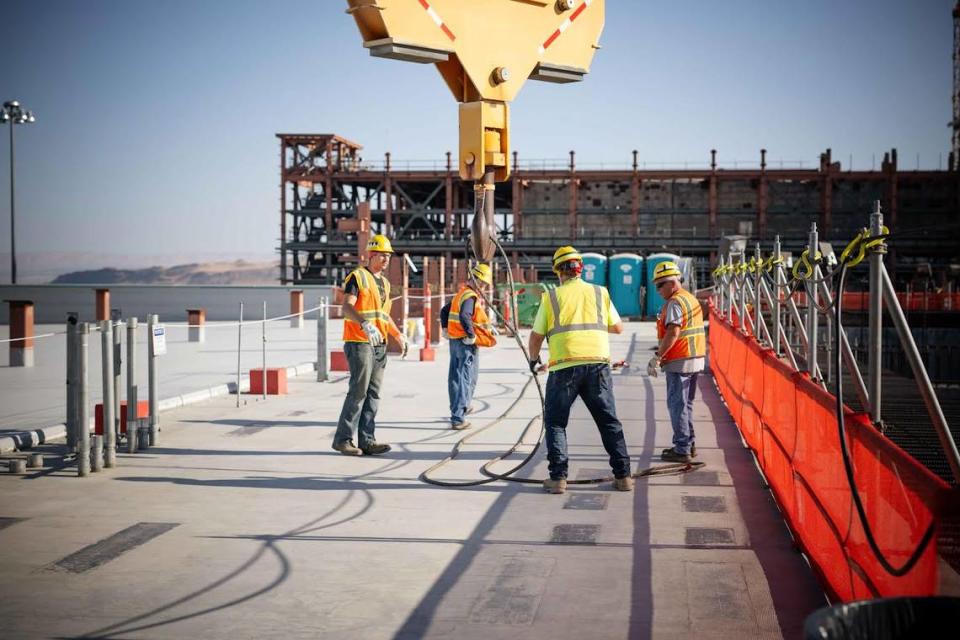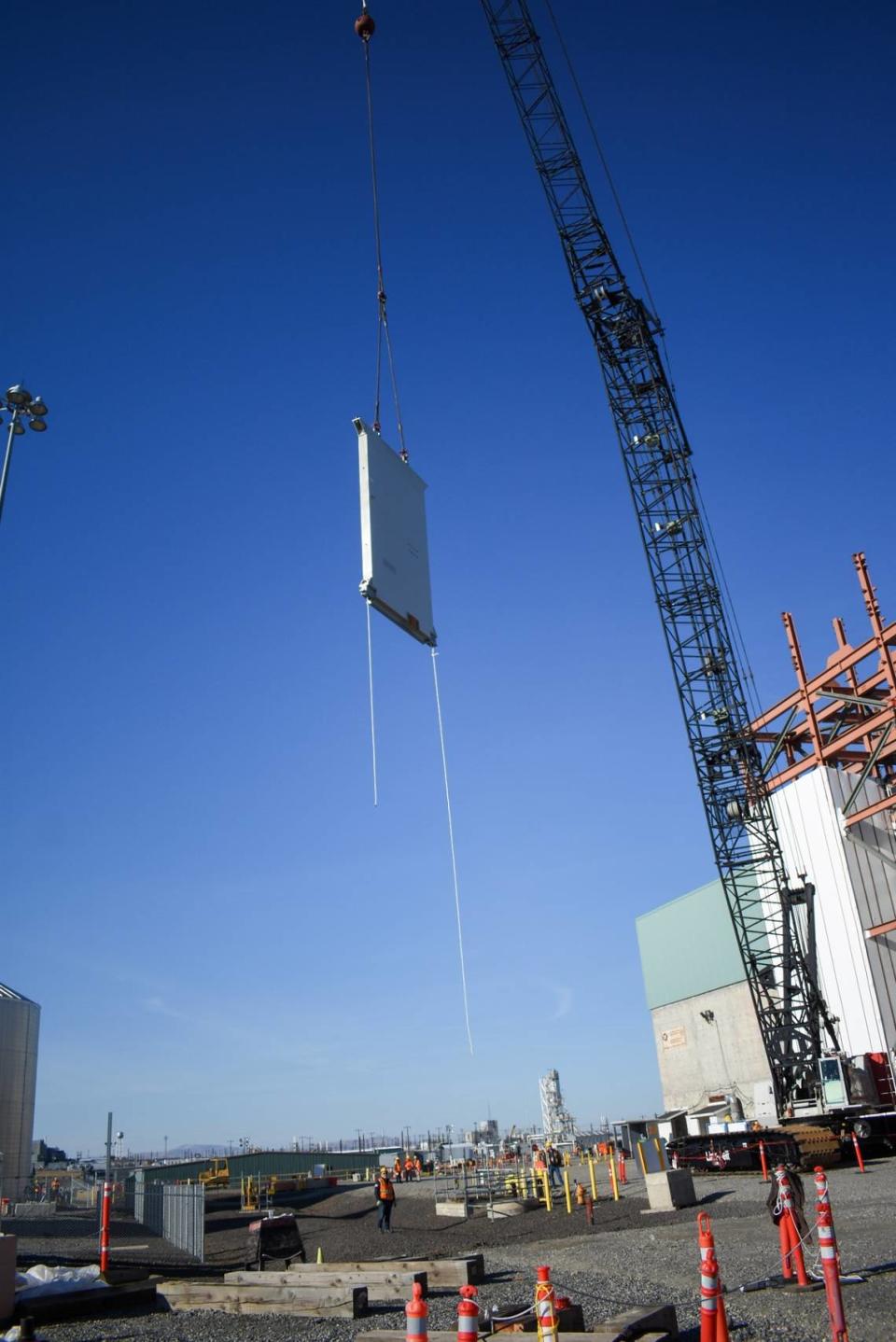Contractor for massive Eastern WA radioactive waste treatment plant paid $9.5 million
The company constructing the massive vitrification plant at the Hanford site in Eastern Washington has been awarded $9.5 million in incentive pay for its work last year on the plant’s High Level Waste Facility.
It was 92% of the $10.3 million in pay available in the Department of Energy’s subjective evaluation of contractor Bechtel National’s work in 2023 and the contractor’s highest annual rating since its contract began in late 2000.
“This is a victory for the entire project,” said Brian Hartman, Bechtel vitrification plant project director, in a message to employees.
The Department of Energy rated Bechtel’s work as “excellent” for 2023, exceeding the overall performance rating of “very good” in 2022.
That year included work on both the plant’s High Level Waste Facility and also its Low Activity Waste Facility. Until this year it was its highest ever annual rating for Bechtel on the project, making it eligible for 83% of possible incentive pay.

DOE last modified the Bechtel contract for the Low Activity Waste Facility in 2016 for work through 2022.
At the time DOE had hoped to have the facility treating waste as soon as 2022, but the COVID-19 pandemic delayed work.
With the contract modification expired, there were no performance milestones for the Low Activity Waste Facility for 2023. However, Bechtel still may earn incentive pay as it meets milestones on the facility.
In 2023 work ramped up on the High Level Waste Facility, which is required by a federal consent decree to be treating radioactive waste in 2033.
The Low Activity Waste Facility is expected to start treating some of the least radioactive waste held in underground tanks next year.
The Hanford nuclear reservation by Richland has 56 million gallons of radioactive and hazardous chemical waste stored in underground tanks, many of them prone to leaking.
The waste is left from the past production of nearly two-thirds of the plutonium for the nation’s nuclear weapons program from World War II through the Cold War.

The vitrification plant is planned to treat much of the tank waste after it is separated into low activity and high level waste streams.
Most construction on the High Level Waste Facility halted in 2012 to resolve technical issues related to high level radioactive waste and the focus turned to getting the Low Activity Waste Facility built and operating.
More focus has returned to the High Level Waste Facility in recent years, with budget requests increasing to $600 million per fiscal year.
Currently Bechtel is working mostly on engineering and design work. It also is doing limited construction to help protect earlier construction from the weather. That includes “flying” 16-ton shield doors by crane into the building that will be 440-feet-long by 275-feet-wide and 95-feet-tall.

In a scorecard made public on the determination of pay — called “fee” at Hanford — DOE praised Bechtel for establishing a highly experienced senior leadership team and leveraging broader industry expertise to complete the High Level Waste Facility design.
It also has assembled a team of workers with experience in engineering, nuclear safety, purchasing, construction, commissioning and operations, DOE said. It is integrating an operations perspective early in the design process.
Areas that need improvement according to DOE include the efficiency of purchasing plant equipment and material and awarding construction subcontracts.
DOE said Bechtel had begun improvements to its procurement process.
DOE also said that Bechtel need to improve the safety training, and oversight of the training, for new construction workers.

